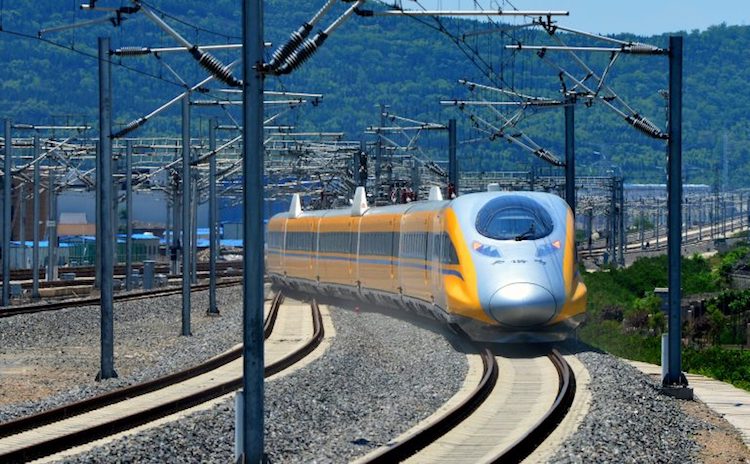Prime Minister Abe is reported to be keen to reach an agreement on specific cooperation project during his planned official visit to China this October.
Viewpoint by Zhao Hong
The author is Professor at the Research School for Southeast Asian Studies, Xiamen University, China. This article was first carried in EastAsiaForum on 15 September 2018. It is being reproduced in view of its relevance beyond Southeast Asia.
SINGAPORE (IDN-INPS) – Southeast Asian countries still face major challenges in regional market integration and connectivity. ASEAN (Association of Southeast Asian Nations) plans to strengthen connectivity through the development of a series of rail, road and water links offering regional powers not only the opportunity to secure overseas investment contracts but also to shape Southeast Asian infrastructure in their favour.
This opportunity has heightened competition between two of Asia’s giants, Japan and China, in overseas infrastructure financing and high-speed rail (HSR) construction.
Japan began its program of large-scale investment in Southeast Asia in the 1970s and had formulated a vision for infrastructure connectivity across the region by the 1990s. Japan’s basic idea is to establish cross-regional and inter-regional interconnectivity and build economic corridors across different developing countries in the region so as to promote ASEAN industrialisation and regional integration.
Japan regards ASEAN as ‘a market where Japan can never lose and be behind’. After it was outbid for the HSR project between Jakarta and Bandung in September 2015, the Japanese government adjusted its loan policies and promised to contribute to ‘high quality’ infrastructure development in the future.
In February 2018, Prime Minister Shinzo Abe and his cabinet outlined Japan’s new aid strategy, pledging to employ Japanese aid to realise its ‘Free and Open Indo-Pacific Strategy’. This strategy, introduced by Abe in August 2016, aims to enhance regional connectivity through ‘high quality’ infrastructure development and maritime law enforcement.
China began its investment in Southeast Asia much later than Japan. Its commitments to infrastructure development in the region began in the early 2000s when Yunnan province and the Guangxi Autonomous Region prioritised inter-regional transport connectivity with Southeast Asian countries.
China’s initiatives for building infrastructure connectivity in Southeast Asia gained momentum in 2013 when President Xi Jinping proposed the Belt and Road Initiative (BRI). Beijing’s long-term goals for infrastructure building in Southeast Asia within the framework of the BRI include the ambitious plan to build a pan-Asia railway network that will see three 4500–5500-kilometre railway lines link China to Southeast Asia. Central, eastern and western routes will run from Kunming through Laos, Thailand, Myanmar, Malaysia and Singapore.
While Chinese investment in the 10 ASEAN countries is well behind Japan and even the United States, it will only increase as the implementation of the BRI continues and policy coordination between China and ASEAN strengthens.
While they may appear to run in competing directions, Chinese and Japanese strategic plans to develop railway networks in Southeast Asia differ. Japan mainly focuses on building East-West lines, which it intends to synergise with several Japan-involved plans to develop East-West Economic Corridors that would connect Myanmar, Thailand, Laos and Vietnam. The aim is to help Japanese companies expand their businesses and optimise their production networks within and outside the region through infrastructure connectivity.
Beijing’s long-term goals are to build a North-South pan-Asia railway network, with the hope that it will synergise with the Kuala Lumpur-Singapore HSR and improve China’s access to Southeast Asia and beyond.
The Japanese government sees the export of infrastructure systems as key to revitalising its long stagnated economy. Infrastructure development is regarded as a business that extends from manufacturing to services and provides an effective means to access the global market. The Abe government is determined to strengthen sales of Japanese infrastructure products through private investment.
For China, its infrastructure projects in the region carry some political weight (mostly due to the geopolitical significance of both the BRI and the China-led Asian Infrastructure Investment Bank), but they rest more on domestic economic interests. China seeks to accelerate the development of its western region through accommodating and synergising with its neighbours’ development strategies.
Japan and China have common goals and economic interests in Southeast Asia. The two sides have realized the importance of collaboration and reached consensus to jointly build infrastructures in third countries. It is believed that Prime Minister Abe will strive to reach an agreement on specific cooperation project during his planned official visit to China this October.
For ASEAN countries, both China and Japan are important sources of investment and key trade partners. Both China and Japan have been able to mobilise their financial and construction capabilities to finance infrastructure projects in Southeast Asia.
Regional connectivity is a long-term goal of the ASEAN Community. ASEAN has its own agenda, including the ASEAN Integration Work Plan and the Master Plan on ASEAN Connectivity 2025. It is possible that investment from either Japan or China may not be considered consistent with these goals.
For example, as Chinese investment in individual countries increases, there are growing concerns that the new infrastructure connections tying China to Southeast Asia may threaten ASEAN connectivity. There are also worries about whether or not the Japanese and Chinese HSR systems will be compatible – it is possible that the railway networks could prove problematic if various countries across the region adopt systems that use different technologies.
Hence, an effective mechanism for coordination and dialogue on regional connectivity between ASEAN, China and Japan is needed. This kind of multilateral collaboration could not only foster trust between China and Japan but also enhance the effectiveness of their infrastructure development efforts. It is in this way that two of Asia’s giants may begin to see through a broader regional perspective rather than through the narrow lens of national interest. [IDN-InDepthNews – 20 September 2018]
Photo credit: eastasiaforum.org


